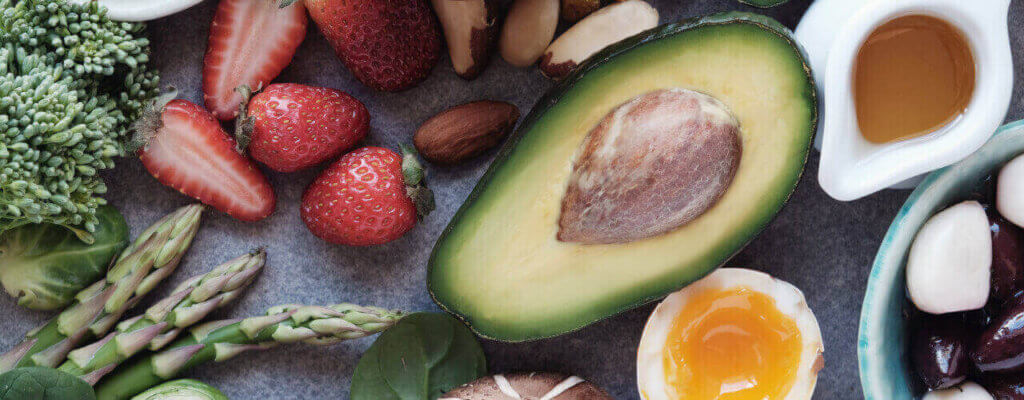Inflammation is a natural defense mechanism that the body employs to keep itself safe and promote recovery. During the inflammatory response, your body produces more white blood cells. Chronic inflammation, on the other hand, can be harmful to one’s health.
Inflammation that persists can result in discomfort, swelling, and redness in the affected areas. It also raises your chances of developing diabetes, cancer, heart disease, and stroke. There are a number of strategies to enhance your nutrition while also reducing pain and inflammation.
What is inflammation?
Your immune system can naturally respond to injury, ailment, or other harm through inflammation. If you have an infection, wound, tissue damage, or buildup of toxins in your body, the immune response is triggered to deal with it.
Without inflammation, injuries wouldn’t be able to heal; however, if this process goes on for too long, chronic inflammation can occur. This can lead to serious health conditions, such as arthritis, diabetes, heart disease, or even some cancers. If you experience persistent pain, it is wise to contact a physical therapist as soon as possible, as it may mean that the inflammation has become chronic.
Traditionally, chronic inflammation has been treated through strict rest and medication. However, a lack of exercise can actually make inflammation worse, as it constricts joints and causes muscles to stiffen.
Additionally, medications come with a whole slew of side effects, some of which can be dangerous and/or habit-forming. Luckily, pain and inflammation can be treated in much easier and healthier ways – such as diet.
Common causes of pain and inflammation
Inflammation is the body’s natural response when it’s trying to heal or protect itself. This, of course, is usually a good thing. Inflammation is harmful when it becomes a chronic condition. Pain and inflammation are often connected.
According to Harvard Health, chronic inflammation can also lead to a variety of health ailments such as heart disease and diabetes.
How is what I eat linked to my pain?
Foods that can cause Inflammation and should be avoided or limited include the following:
- Refined Carbohydrates – Refined carbs include grains that have had most of the fiber and nutrients taken out. Pasta, pastries, white bread, and white flour are all refined carbs that should be eliminated or eaten rarely.
- Red Meat – Healthy, lean protein is a crucial component when creating a diet to reduce pain and inflammation. Protein builds muscle and cartilage. Red meat, especially meats that are processed, can lead to increased inflammation. Chicken is often considered neutral, while many types of fish actually fight pain and inflammation in the body.
- Fried Foods – Everything from fried chicken to deep-fried veggies can contribute to inflammation. Eat your veggies raw, steamed, or baked for the most health benefits.
- Soda – Soda can increase levels of uric acid. This often causes an increase in inflammation and even insulin resistance. Drinking water or tea in place of soda will not only help reduce pain and inflammation but may also help you shed a few pounds.
Reducing inflammation with your diet
Just like there are foods you should avoid in your diet, there are plenty you should add as well to reduce inflammation! Some of the best are:
- Berries – Berries have an abundance of antioxidants that can eliminate inflammation. Strawberries, blackberries, blueberries, and raspberries are all good choices.
- Green Tea – Green tea is rich in polyphenols and antioxidants that can reduce inflammation. It’s recommended to use water that’s not higher in temperature than 160 degrees since boiling water may destroy many of the antioxidants.
- Leafy Vegetables – Almost all fruits and vegetables contain what is called phytonutrients that can help fight inflammation.
- Fatty Fish – Wild-caught salmon, sardines, and mackerel are great sources of Omega-3s, which can fight inflammation. They may even limit stiffness in the joints which is sometimes associated with rheumatoid arthritis.
- Olive Oil – Olive oil is a monounsaturated fat that tastes great and can help reduce inflammation. Make sure to select olive oil that is extra virgin in order to receive the most health benefits. Olive oil that is real extra virgin should solidify after it is refrigerated.
PT and nutrition
Physical therapy, combined with good nutritional habits, can greatly reduce or even eliminate your pain and inflammation. The American Physical Therapy Association states that the connection between pain and nutrition is strong enough that nutritional screening is often recommended.
A physical therapist can provide nutritional guidance along with creating an exercise program that targets and reduces the pain and inflammation you’ve been experiencing. A physical therapist may recommend activities such as swimming or simple stretching to increase joint flexibility and range of motion.
Good nutrition along with a physical therapy treatment plan can help you manage or even eliminate chronic pain by increasing the strength in certain muscles and improving joint stability.
Consult with a physical therapist today
Instead of relying on surgery or pain medication, improving your diet and a physical therapy program customized to meet your specific needs can help you live pain-free.
Source:
Tags: physical therapy, physical therapist, aches and pains, natural pain relief, healthy eating, healthy lifestyle

